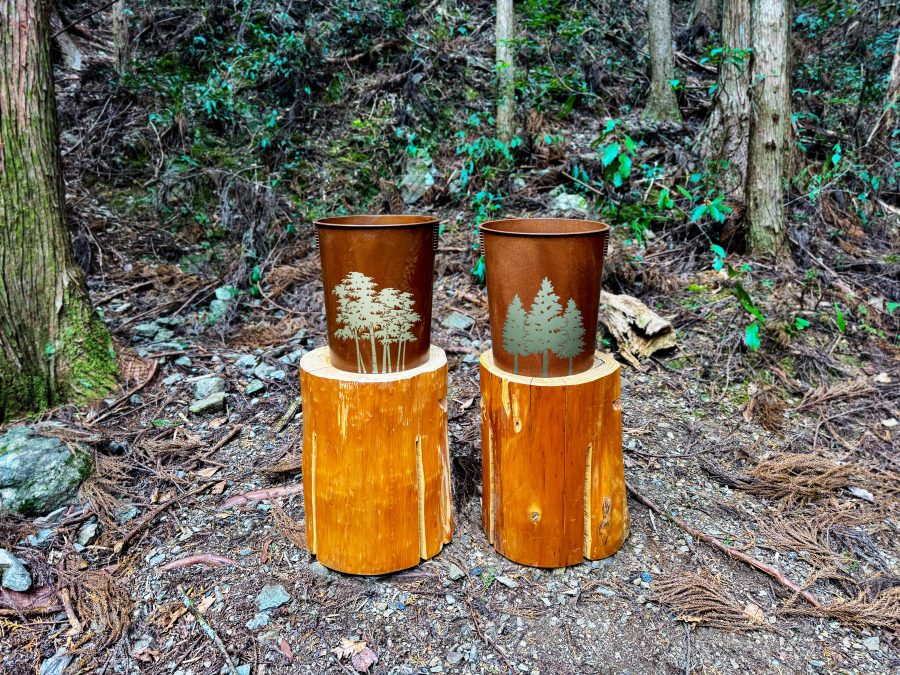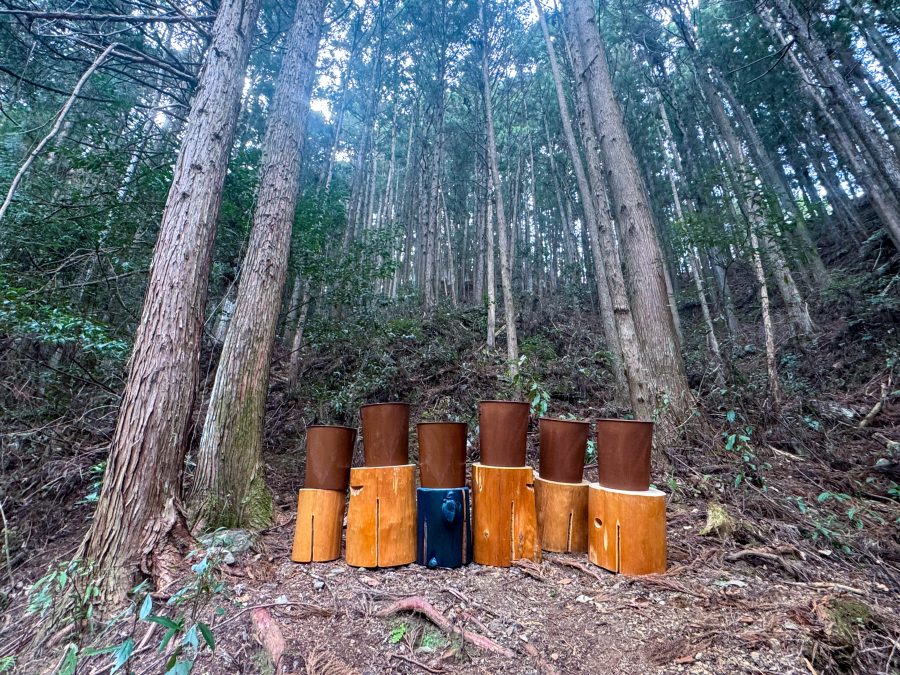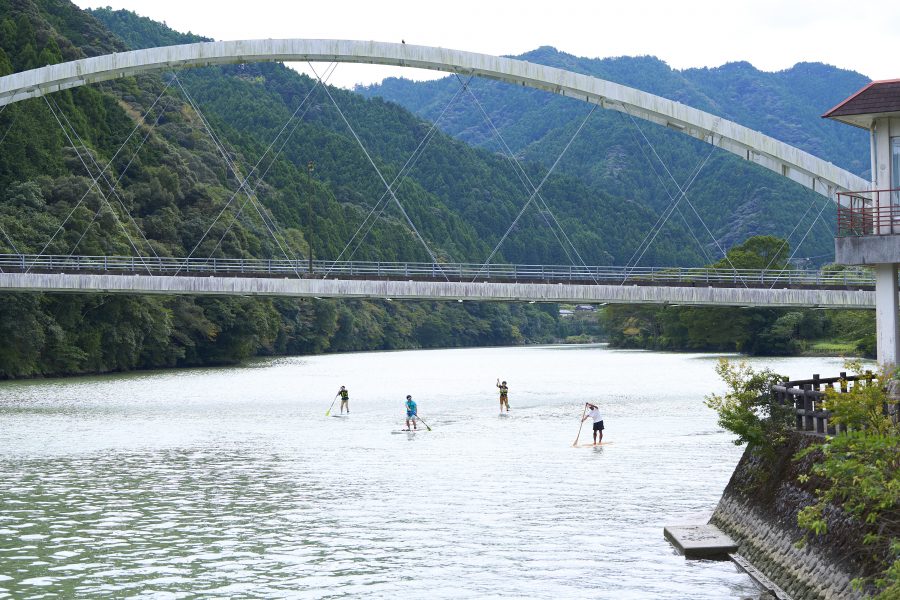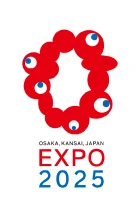
These “trash cans” are born from “wood powder” produced with unused lumber and bamboo grown in Tokushima Prefecture without any waste. Under the slogan of “reforestation and regional revitalization,” the representative enterprise Orikane and 5 partner companies including the new project member JTB, which is a travel agency, joined hands and racked their brains for designing and shaping trash cans. Sadanori Hattori of Orikane, who is serving as a coordinator, said, “Companies that are not connected with one another in normal operations were able to join hands through the Co-Design Challenge, and create something new together.” Shono, too, recalled those days, saying, “Our team members were united, centering around Orikane. This project would be impossible without team members.”
Regarding the ratio of blended wood powder on which Shono focused, the target was almost achieved, and the ratio reached nearly 50%. In order to secure a stable shape, they finetuned the balance between resin and the blending ratio, and a ratio of blended wood power of over 50% now seems to be achievable.
Significant progress was observed in terms of design, too. When materials blended with wood powder are poured into a mold, the surface becomes uneven, but they decided to proactively harness unevenness, saying, “This is another texture unique to natural materials. We hope that visitors will enjoy the one-of-a-kind texture.” While utilizing the gradation of the dark brown color, the silhouettes of cedar and bamboo are illustrated. As each trash can is only 28 cm high, they pondered over the next step for spotlighting the presence of these trash cans at the Expo. Someone came up with an idea of fixating each trash can onto a mount cut out from a log. The mount is about 30 cm high. When the trash cans are fixated onto the mounts, the silhouettes of cedar and bamboo look as if they had grown from the log, and their heights become appropriate, making the cans much more conspicuous.
They plan to use trash bags that are 30% made of plant-derived materials, and put them into the trash cans so that the illustrations on them will not be concealed. The trash cans are produced by using environmentally-friendly materials. Shono said with expectation, “I hope that before throwing away trash, visitors will become aware of whether the trash is really useless.”
They are discussing the details of experience-based events scheduled to be held in spring, summer, and autumn so that visitors will be able to enjoy themselves in Naka Town, Tokushima Prefecture, which is blessed with a wealth of nature and called “the theme park of nature.” Together with JTB, they aim to realize “sightseeing plans developed by the local communities of respective sightseeing spots” for reeling in travelers by utilizing the attractive features of respective spots. The nature and scenery local people see every day and became familiar with would generate added value, as people from outside the region would think that “these are extraordinary and very nice.” If spaces for enjoying the scenery are built with decks, tables, etc. in bamboo groves, sustainable sightseeing will become feasible.
Naka Town is blessed with tranquil forests and limpid streams. The treasures that have been preserved carefully by local communities have attractive features that are yet to be unveiled. Shono keenly feels that possibilities will expand if they take action. They aim to invigorate the region by using trash cans. While continuing endeavors, they will move step by step toward a better future for forestry and Naka Town.

to be provided to the venue of the Expo (before painting)

Share this article


